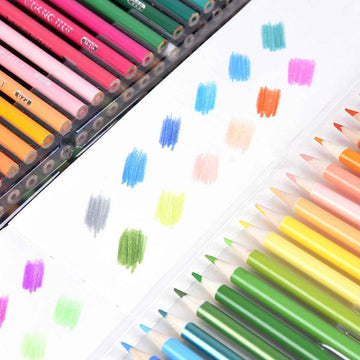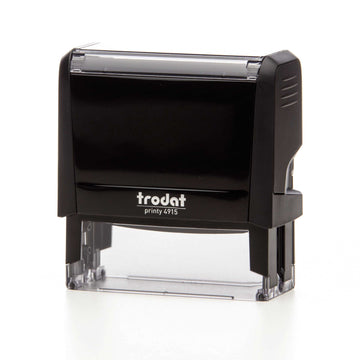# The Ultimate Beginner’s Guide to Colored Pencils
## Introduction
Colored pencils are an exciting medium for drawing and art. Their vibrancy, versatility, and forgiving nature make them ideal for beginners. This guide will walk you through everything you need to know to get started with colored pencils, from types and techniques to essential tips for buying your first set. Let’s dive in!
## The 3 Different Types of Colored Pencils
There are three main categories of colored pencils, each with their own qualities:
- Wax-based: These contain a wax binder mixed with the pigment. They are soft and easy to blend but can smudge. Brands like Prismacolor and Crayola wax pencils are beginner-friendly.
- Oil-based: The pigment is held together with a binder of refined mineral oil. Oil pencils produce rich, smooth color but are harder to erase. Faber-Castell Polychromos are premium oil pencils.
- Water-soluble: Contain a water-soluble binder that activates when wet. They can create fluid wash effects. Leading brands are Caran d’Ache Supracolor and Derwent Inktense.
## Storage
Proper storage keeps your colored pencils in peak condition:
- Store in a pencil case or box vertically to avoid warping the core.
- Avoid extreme heat or cold.
- Do not store in direct sunlight, which can fade colors.
- Consider organizing by color family or light to dark.
## Paper
Paper texture and tooth impacts colored pencil effects:
- Smoother paper allows layers of color to build up easily. Bristol works well.
- Textured paper allows grabbing more pigment for bolder marks. Try fine grain sandpaper or pastel paper.
- Heavier paper prevents indentation from pressure. At least 80lb weight is ideal.
## How to Sharpen Colored Pencils
- Use a manual or electric sharpener with a barrel suited to larger-core pencils.
- Single blade sharpeners allow more precision. Watch that you don’t over-sharpen.
- Keep your points sharp but avoid wearing down too much of the core.
- After sharpening, gently rub the point on sandpaper to smooth and shape it.
## Coloring Techniques
- Light Pressure: Outlines, preliminary sketches, or delicate detailing.
- Heavy Pressure: Bolder coverage and rich, saturated colors.
- Cross-hatching: Layers of overlapping linear strokes in varying directions. Great for shading.
- Burnishing: Build up color intensity by repeatedly layering and pressing hard.
- Stippling: Small dots of color to create texture and value.
- Feathering: Use a colorless blender to soften edges and gradient transitions.
## Blending Techniques
- Layer colors, starting light and increasing pressure with progressively darker shades. Slowly build up.
- Burnish by vigorously scribbling between layers. The friction blends and mixes colors.
- Optical blending creates gradients simply by positioning colors side-by-side.
- Use colorless blenders like Gamsol to feather and dissolve edges between layers.
## Erasing
- Non-wax pencils are pretty resistant to erasing but some tips can help:
- Kneaded erasers can lift color off more gently than standard erasers.
- Electric erasers work better than manual ones for stubborn pigment.
- Place a sheet of plain paper under the area you want to erase to absorb more pigment.
## Brushing
- Gentle brushing can help blend and soften edges in your colored pencil work.
- Use a soft brush made of sable or synthetics. Toothbrush sponges also work well.
- Avoid excessive brushing or you can end up removing too much pigment.
## Colored Pencil Tutorials
There are tons of helpful colored pencil tutorials available online. Here are some great beginner tutorials to check out:
- How to Shade with Colored Pencils by Draw So Cute
- Colored Pencil Techniques for Beginners by Makoccino
- Colored Pencil Painting for Beginners by Emma Lefebvre Design
- Easy Apple Drawing Tutorial by Jesse Lane Art
## Latest Articles & Guides
Stay inspired and keep learning! Here are some helpful colored pencil blogs and guides:
- Colored Pencil Magazine – Techniques, interviews, and news
- Colored Pencil Tips & Techniques by Cynthia Knox – Step-by-step lessons
- Beginner's Guide to Colored Pencils by Live and Learn Art – In-depth guide
Now you’re ready to try your hand at colored pencils! Remember to experiment, practice, and most importantly, have fun. Colored pencils are a joyful medium with so much potential.
## Introduction
Colored pencils are an exciting medium for drawing and art. Their vibrancy, versatility, and forgiving nature make them ideal for beginners. This guide will walk you through everything you need to know to get started with colored pencils, from types and techniques to essential tips for buying your first set. Let’s dive in!
## The 3 Different Types of Colored Pencils
There are three main categories of colored pencils, each with their own qualities:
- Wax-based: These contain a wax binder mixed with the pigment. They are soft and easy to blend but can smudge. Brands like Prismacolor and Crayola wax pencils are beginner-friendly.
- Oil-based: The pigment is held together with a binder of refined mineral oil. Oil pencils produce rich, smooth color but are harder to erase. Faber-Castell Polychromos are premium oil pencils.
- Water-soluble: Contain a water-soluble binder that activates when wet. They can create fluid wash effects. Leading brands are Caran d’Ache Supracolor and Derwent Inktense.
## Storage
Proper storage keeps your colored pencils in peak condition:
- Store in a pencil case or box vertically to avoid warping the core.
- Avoid extreme heat or cold.
- Do not store in direct sunlight, which can fade colors.
- Consider organizing by color family or light to dark.
## Paper
Paper texture and tooth impacts colored pencil effects:
- Smoother paper allows layers of color to build up easily. Bristol works well.
- Textured paper allows grabbing more pigment for bolder marks. Try fine grain sandpaper or pastel paper.
- Heavier paper prevents indentation from pressure. At least 80lb weight is ideal.
## How to Sharpen Colored Pencils
- Use a manual or electric sharpener with a barrel suited to larger-core pencils.
- Single blade sharpeners allow more precision. Watch that you don’t over-sharpen.
- Keep your points sharp but avoid wearing down too much of the core.
- After sharpening, gently rub the point on sandpaper to smooth and shape it.
## Coloring Techniques
- Light Pressure: Outlines, preliminary sketches, or delicate detailing.
- Heavy Pressure: Bolder coverage and rich, saturated colors.
- Cross-hatching: Layers of overlapping linear strokes in varying directions. Great for shading.
- Burnishing: Build up color intensity by repeatedly layering and pressing hard.
- Stippling: Small dots of color to create texture and value.
- Feathering: Use a colorless blender to soften edges and gradient transitions.
## Blending Techniques
- Layer colors, starting light and increasing pressure with progressively darker shades. Slowly build up.
- Burnish by vigorously scribbling between layers. The friction blends and mixes colors.
- Optical blending creates gradients simply by positioning colors side-by-side.
- Use colorless blenders like Gamsol to feather and dissolve edges between layers.
## Erasing
- Non-wax pencils are pretty resistant to erasing but some tips can help:
- Kneaded erasers can lift color off more gently than standard erasers.
- Electric erasers work better than manual ones for stubborn pigment.
- Place a sheet of plain paper under the area you want to erase to absorb more pigment.
## Brushing
- Gentle brushing can help blend and soften edges in your colored pencil work.
- Use a soft brush made of sable or synthetics. Toothbrush sponges also work well.
- Avoid excessive brushing or you can end up removing too much pigment.
## Colored Pencil Tutorials
There are tons of helpful colored pencil tutorials available online. Here are some great beginner tutorials to check out:
- How to Shade with Colored Pencils by Draw So Cute
- Colored Pencil Techniques for Beginners by Makoccino
- Colored Pencil Painting for Beginners by Emma Lefebvre Design
- Easy Apple Drawing Tutorial by Jesse Lane Art
## Latest Articles & Guides
Stay inspired and keep learning! Here are some helpful colored pencil blogs and guides:
- Colored Pencil Magazine – Techniques, interviews, and news
- Colored Pencil Tips & Techniques by Cynthia Knox – Step-by-step lessons
- Beginner's Guide to Colored Pencils by Live and Learn Art – In-depth guide
Now you’re ready to try your hand at colored pencils! Remember to experiment, practice, and most importantly, have fun. Colored pencils are a joyful medium with so much potential.




![The Ultimate Guide to Choosing the Best Gel Pens for Artists in 2025 [Tested]](http://www.ttpen.com/cdn/shop/articles/O1CN018s5Xo41Omcz3huVR5__1122161748.jpg_39a38d3e-7c62-4d4e-bd3f-1a6b3e115877.webp?v=1763730326&width=360)
